Legendary photographer Gordon Parks described Chicago’s Metropolitan Missionary Baptist Church as “a temple of hope to thousands of Negro people caught in the backyard of this vast city” when he visited this African American congregation on the city’s Near West Side in 1953. Before that, though, it was built as the Third Church of Christ, Scientist. With its unusual combination of Classical Revival form with Prairie Style detail, the building reveals a new religion still experimenting with its ecclesiastical architectural style.

Designed by Hugh M.G. Garden and finished in 1901, this was Chicago’s third Christian Science church. There was a satisfying order to the faith’s expansion in the city, with the first one on the South Side, the second on the North Side, and this, the third, on the West Side. Architect Solon Spencer Beman did more than anyone to codify a style for Christian Science, designing 20 mostly Neoclassical churches for them, including six in Chicago. Hugh Garden took Beman’s temple-like forms and added his specialty: organic, Prairie-Style detail.
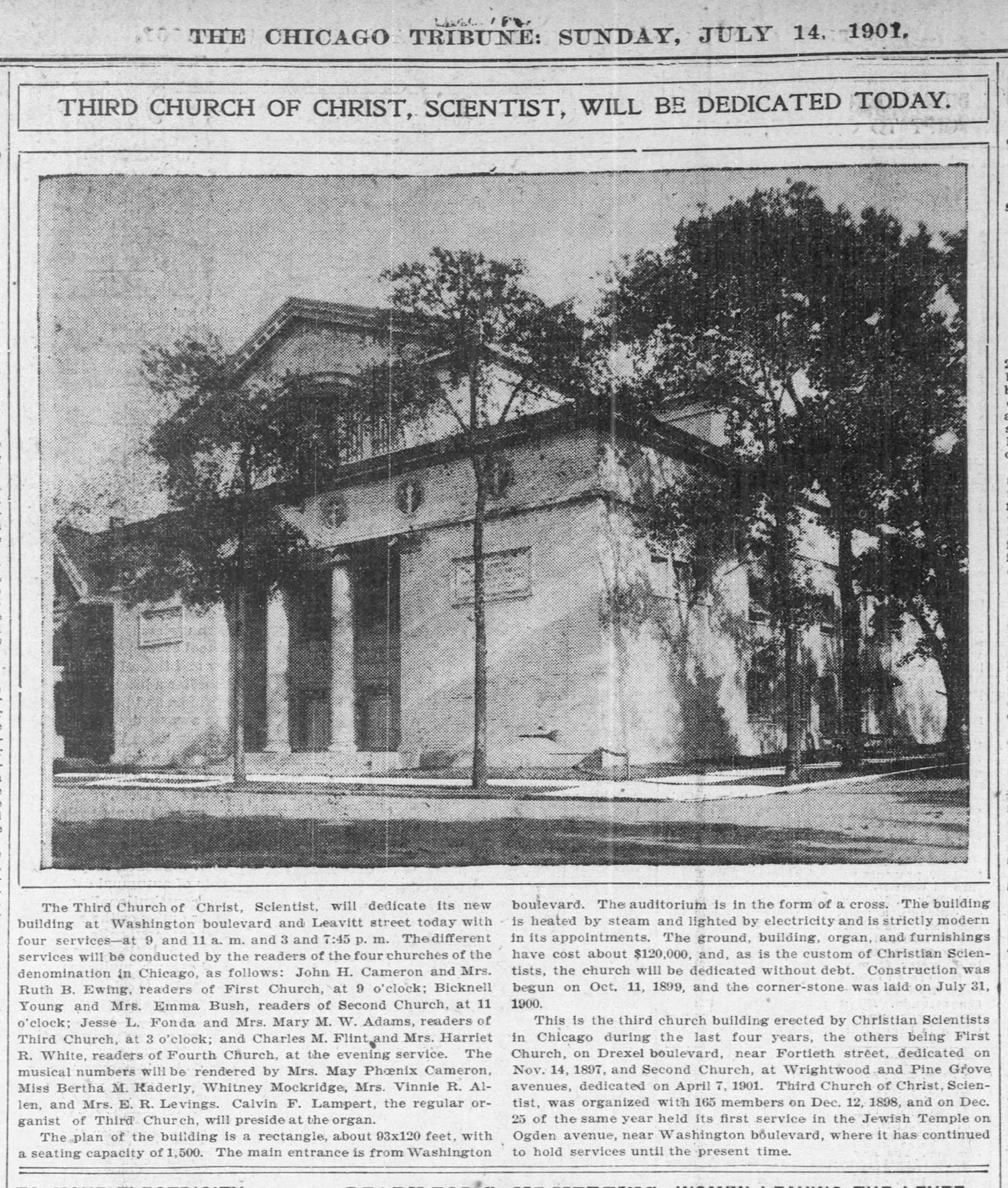
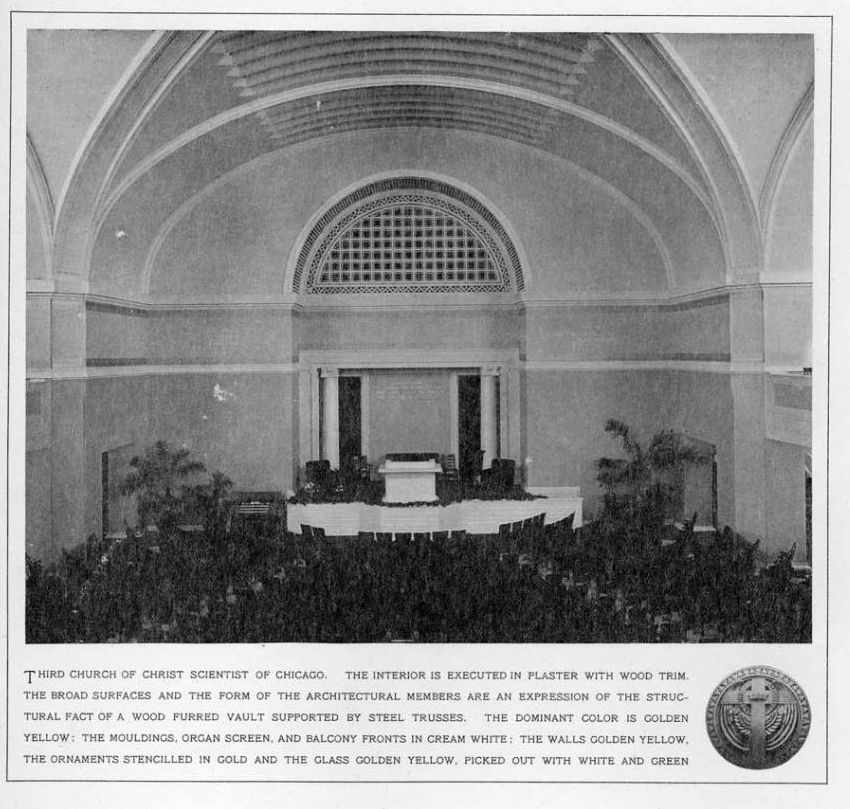
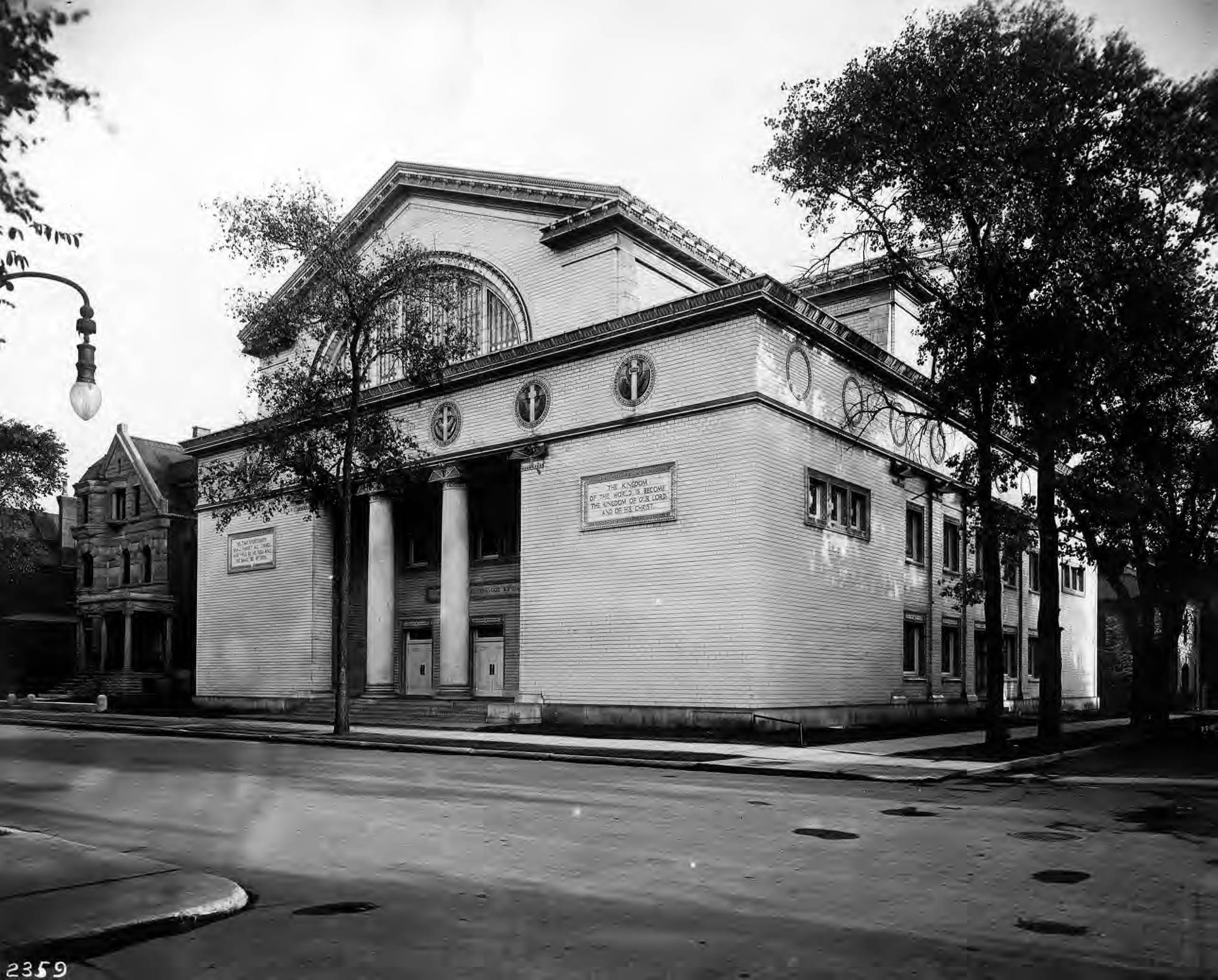
1901 Chicago Tribune article on the dedication of the new church | 1902 sketch of the interior, the Ryerson and Burnham Archives at the Art Institute of Chicago | 1914, Northwest Architectural Archives, University of Minnesota Libraries |
Hugh Garden was one of Chicago's preeminent (and perhaps a little underappreciated) Prairie-style practitioners. Architect Richard Schmidt hired Garden as his chief designer in 1897, but allowed him to take independent commissions like this one until they formed the partnership of Schmidt, Garden & Martin in 1906. Highlights from Garden's productive career include the Montgomery Ward Catalog House, the Madlener House, the Humboldt Park Boathouse, and the Schoenhofen Brewery in Pilsen. He also designed one other Christian Science church, in Iowa (...it looked nothing like this). Here, Garden made neat use terracotta ornament as well as glazed brick from Momence, Illinois. Writing in The Brickbuilder in 1900, Garden said he chose glazed brick from the Tiffany Enameled Brick Co., ‘‘not only on account of its non-absorption of moisture and dirt, but because of its great beauty" (that non-absorption is partially why it looks so sharp today, with decades of soot fended off by the brick glaze).
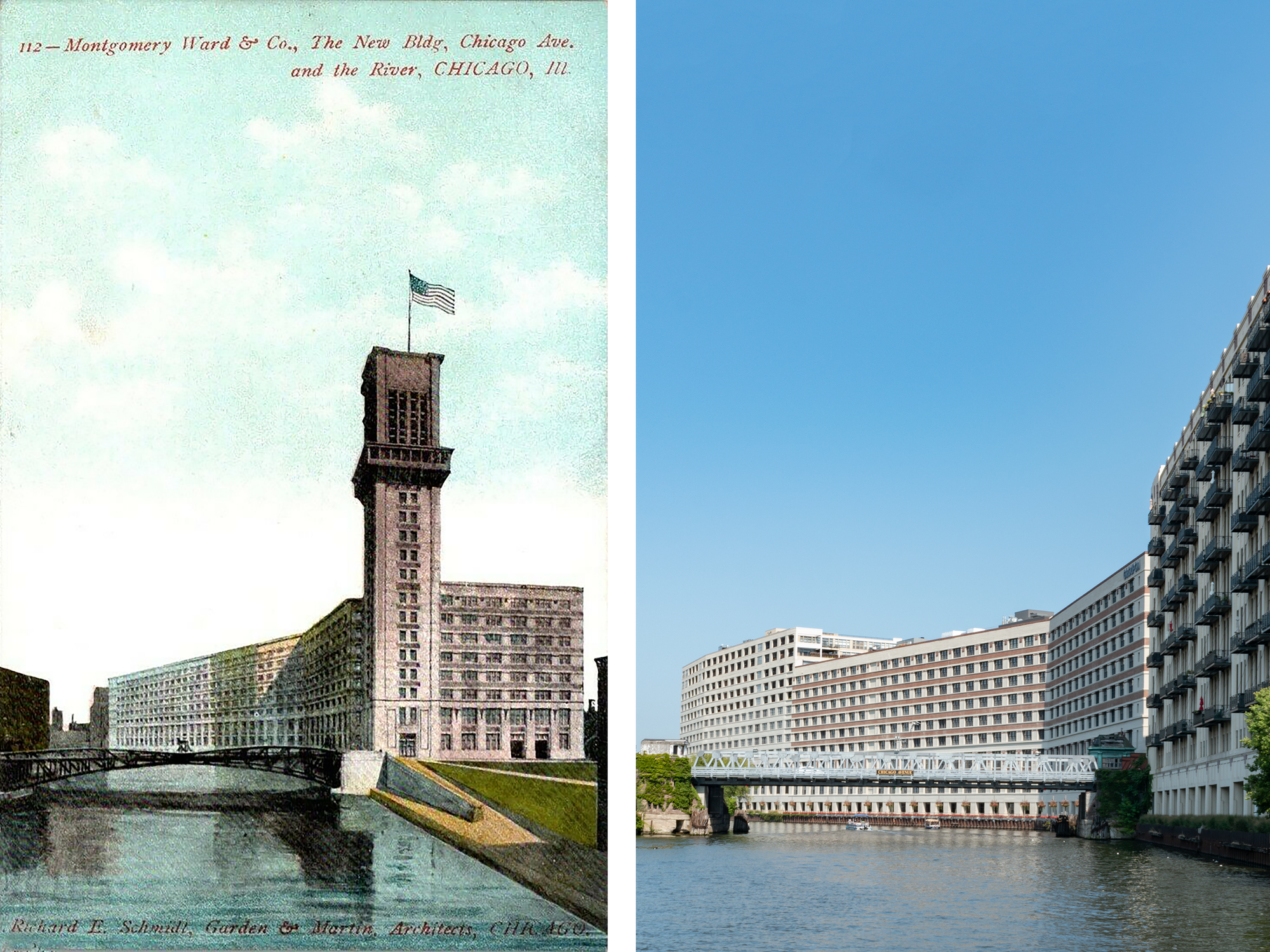
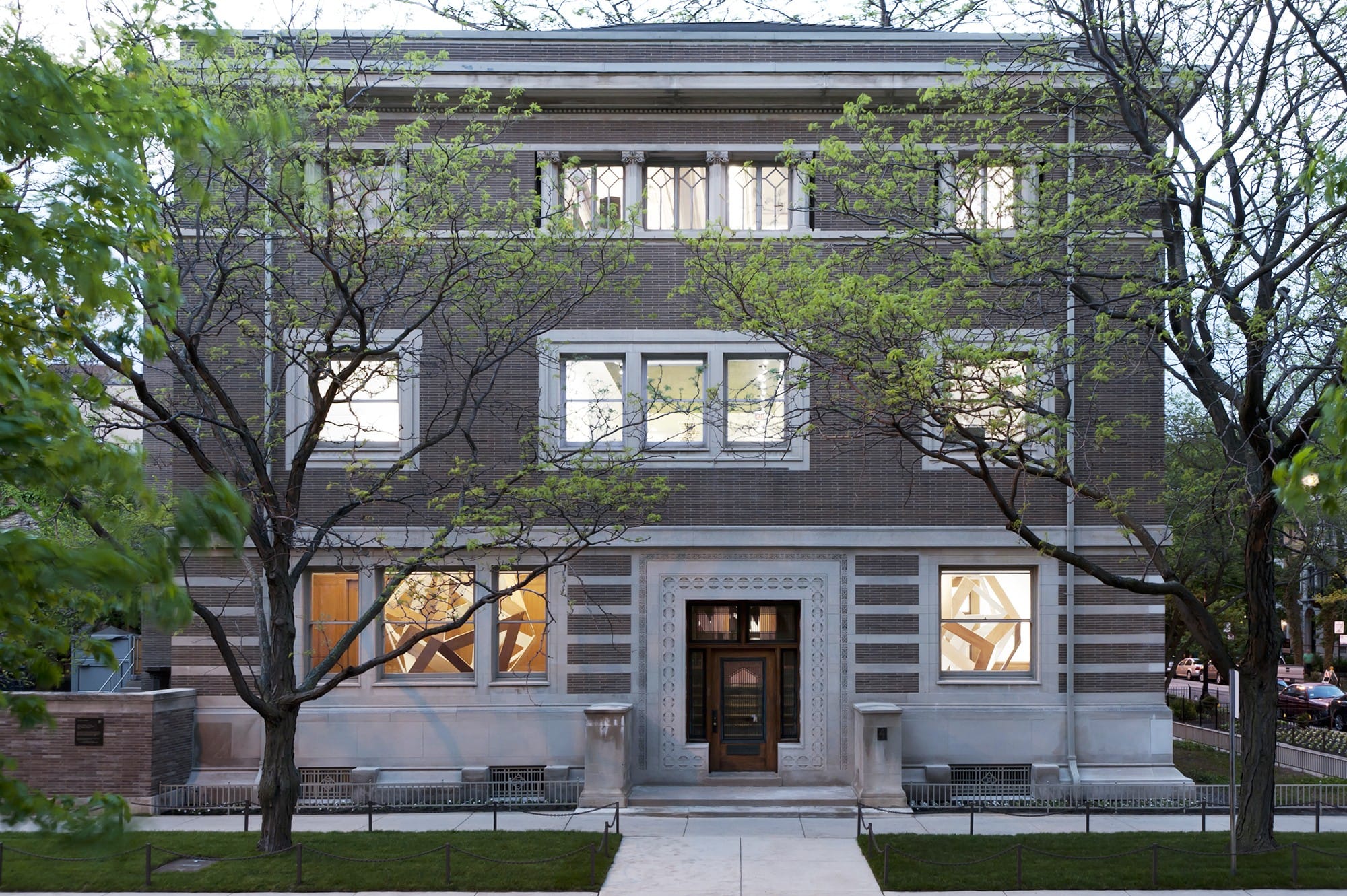
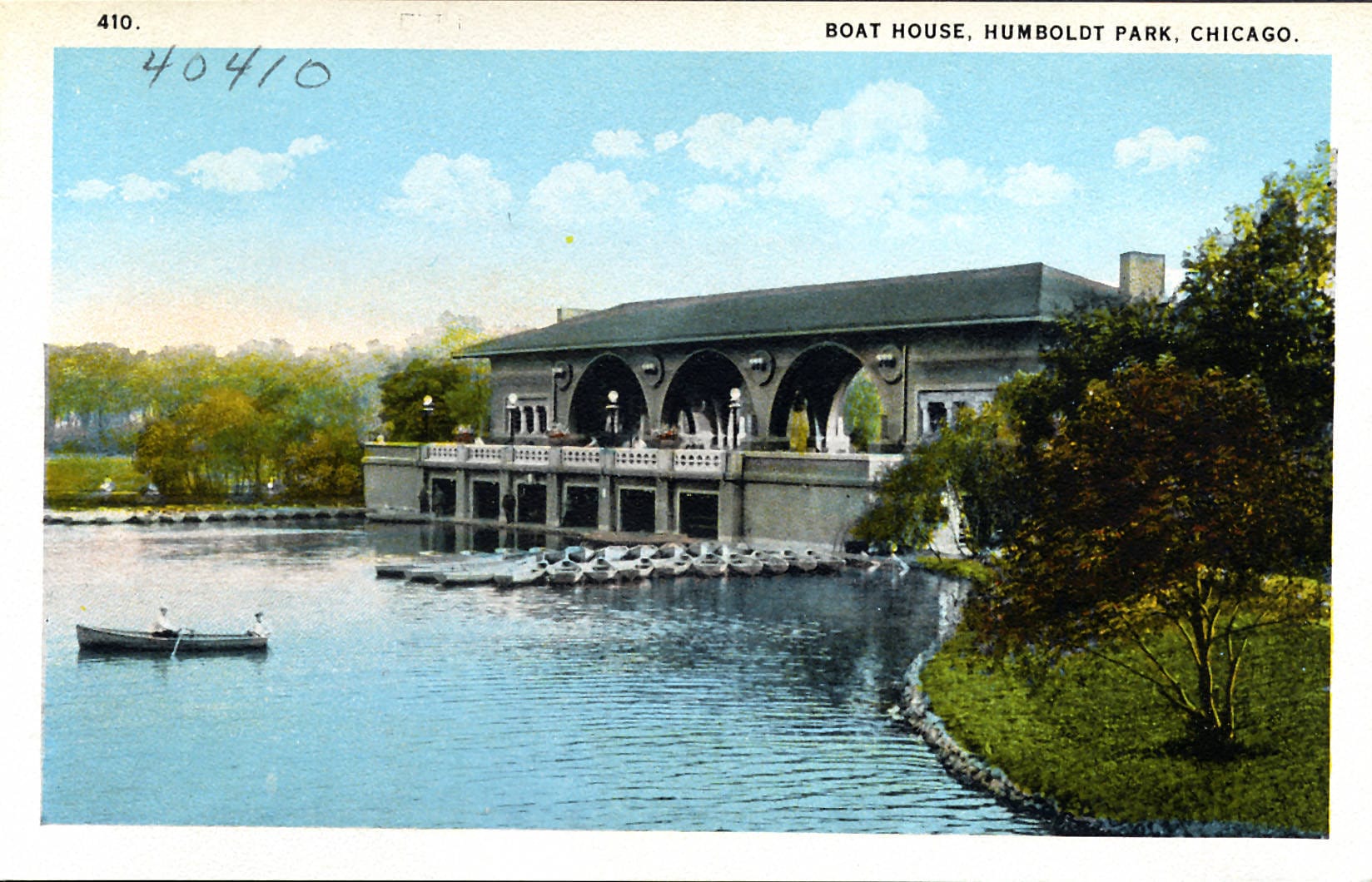
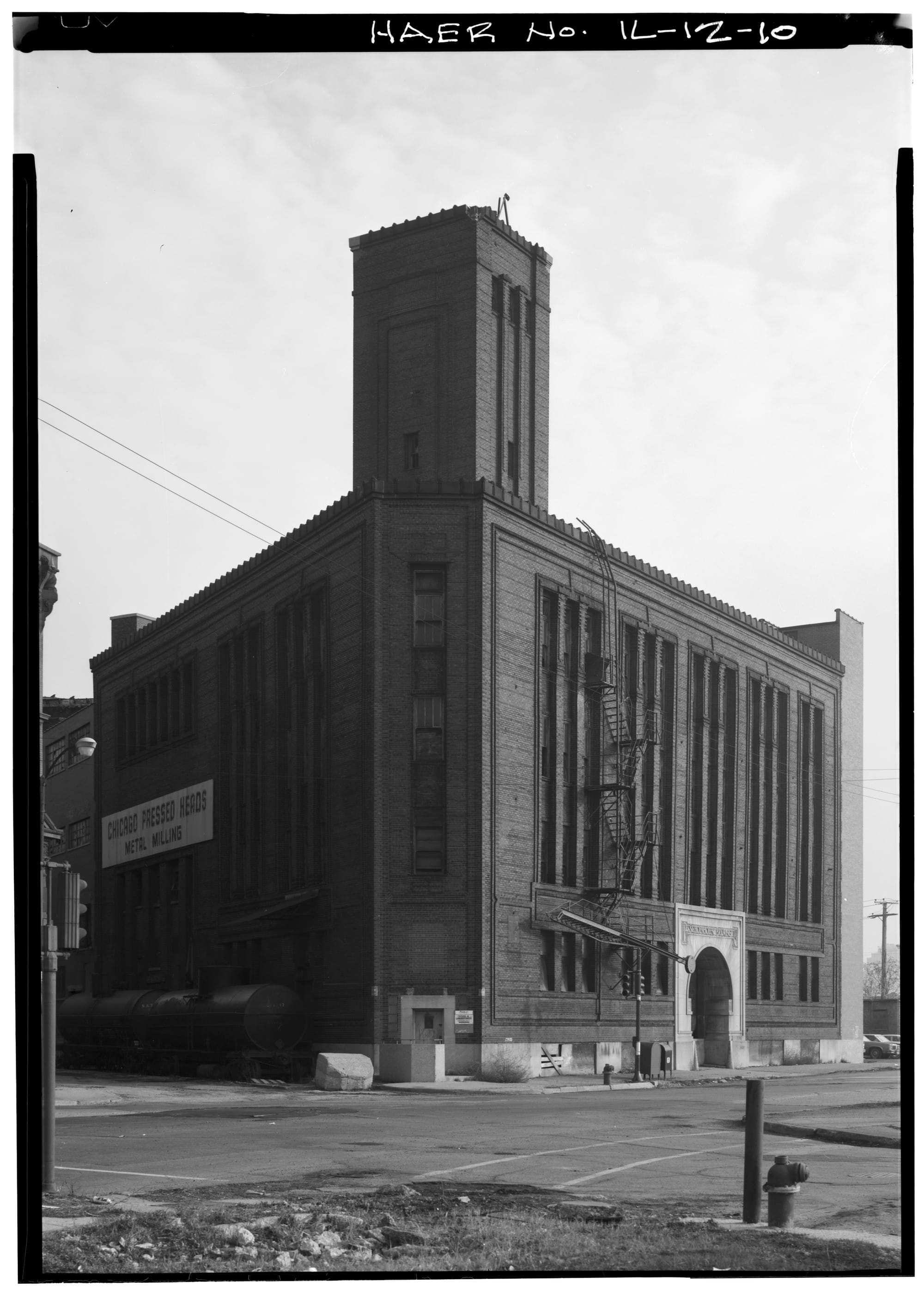
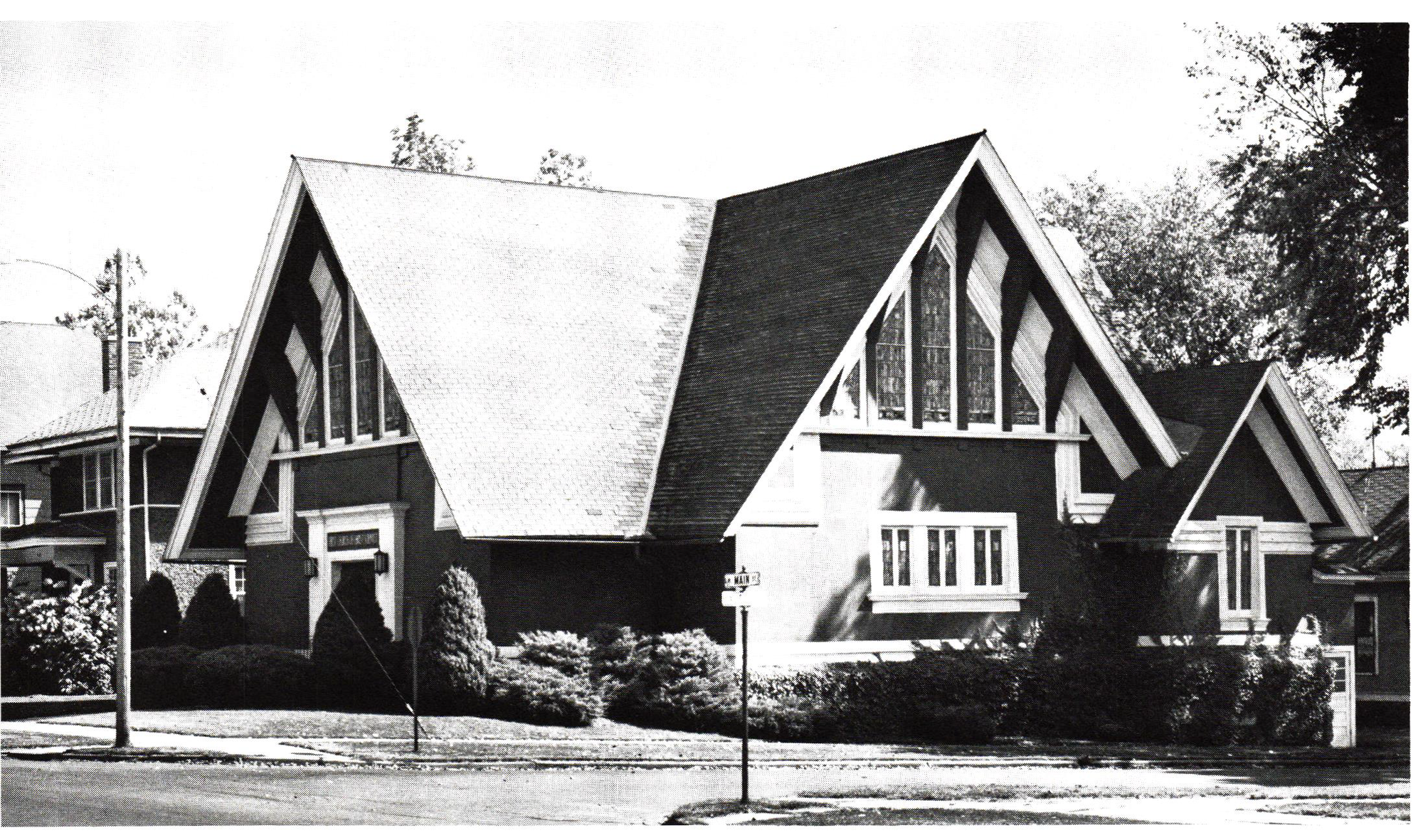
Montgomery Ward Catalog House | the Madlener House (now the Graham Foundation), Wikimedia Commons | Humboldt Park Boathouse, 1914, Curt Teich Postcard Archives, Newberry Library | Schoenhofen Brewery, HAER ILL,16-CHIG,61--10, Library of Congress | Hugh Garden's First Church of Christ, Scientist, in Marshalltown, Iowa, 1968, The Prairie School Review
The Christian Scientists white fled in the 1940s, and Metropolitan Missionary Baptist Church bought the building in 1947. Founded by Reverend E.F. Smith in 1920, the congregation’s first location was only a few blocks away on Warren & Western–this was an easy next stop for the growing church. Gordon Parks visited on assignment for Life in 1953 for a story on the role of Chicago's Black churches after the Great Migration. Initially accompanied by a white reporter, the congregation asked Parks to do the story himself–this was the photographer's first writing assignment for Life, although the piece was never published. Parks wrote that, "to thousands of black voices that cry out within its porcelain-bricked walls it’s the 'great home in the wilderness'", and over the next few decades Metropolitan would grow into a community anchor on the West Side.
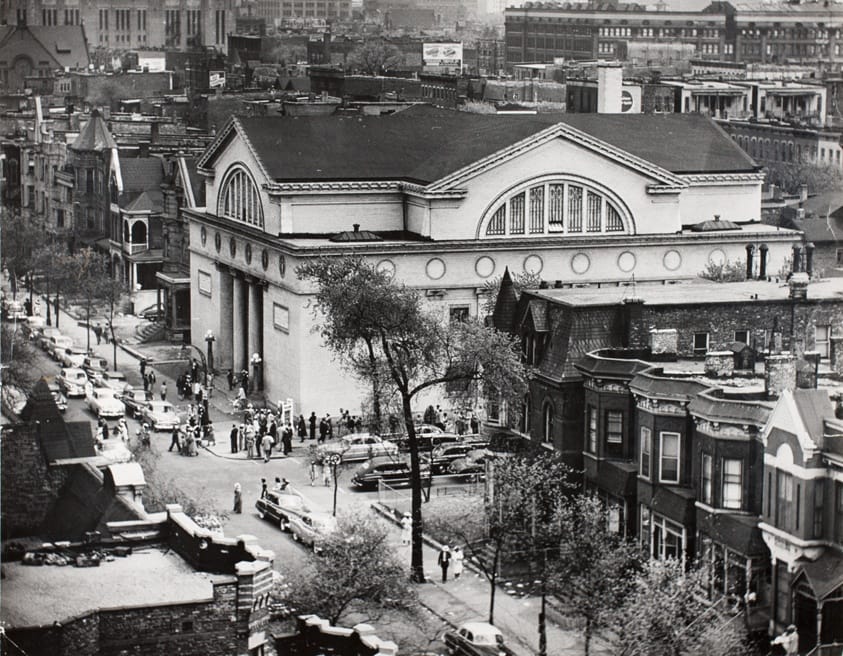
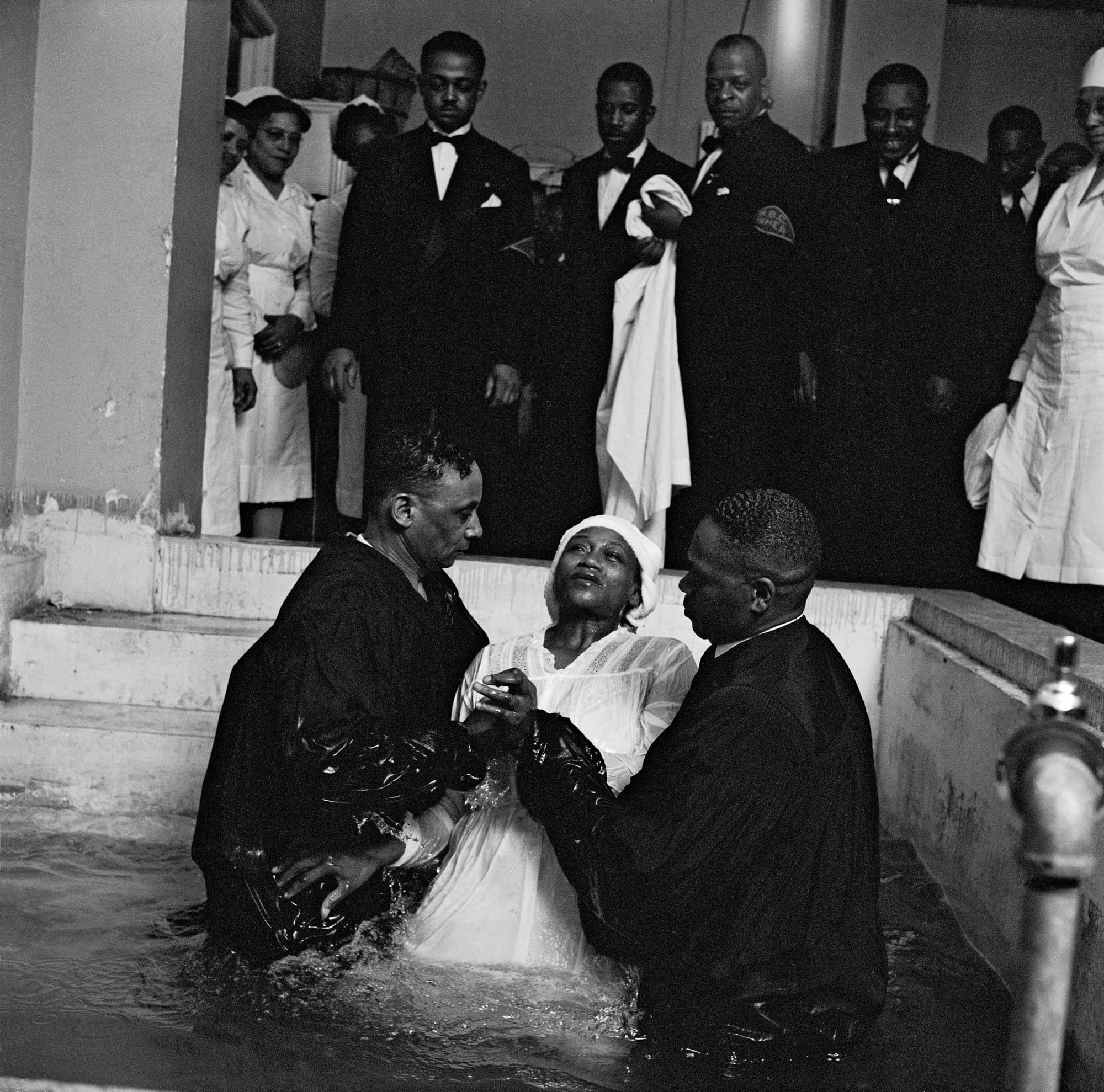
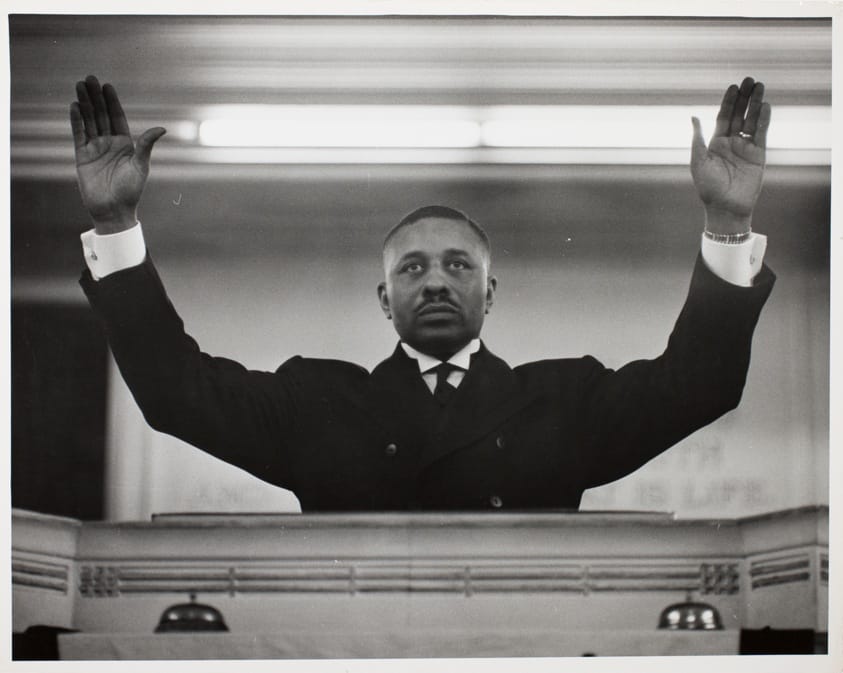
Gordon Parks, 1953, from the series "Metropolitan Baptist Church", Art Institute of Chicago
The 1980s appear to have been tumultuous for the church, though, with serious internal strife under the leadership of pastor Rev. Jesse Taylor. It was a period of decline, with church membership shrinking from 2,000 to 600 over 15 years. The conflict peaked in 1986 with an effort to remove Rev. Taylor. There was a court-ordered freeze of the church’s finances and, during the first vote to remove Taylor, things got so heated that the Chicago Defender reported one elderly parishioner "pulled out her scissors to 'stab a deacon' during the turmoil”. In a court-ordered re-vote, the congregation voted 375-294 to oust Rev. Taylor. After his removal, Taylor founded a new church and took 200-some parishioners with him. With the tumult of the 1980s long behind them, Metropolitan appears to be a vibrant church today.
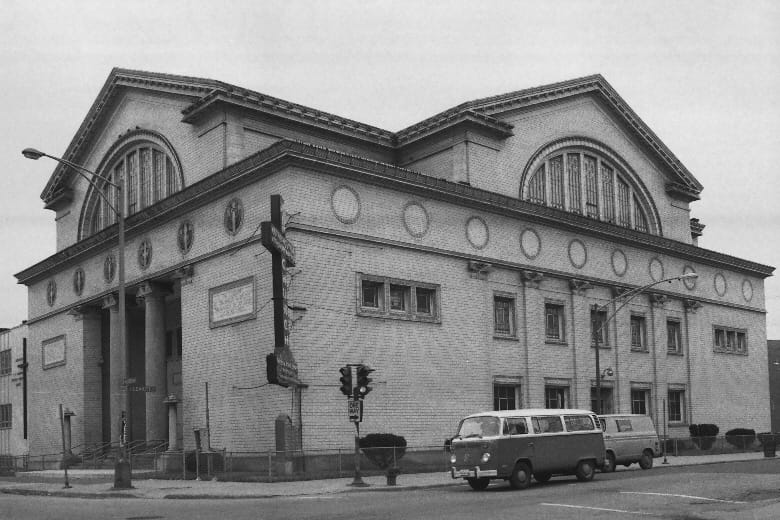
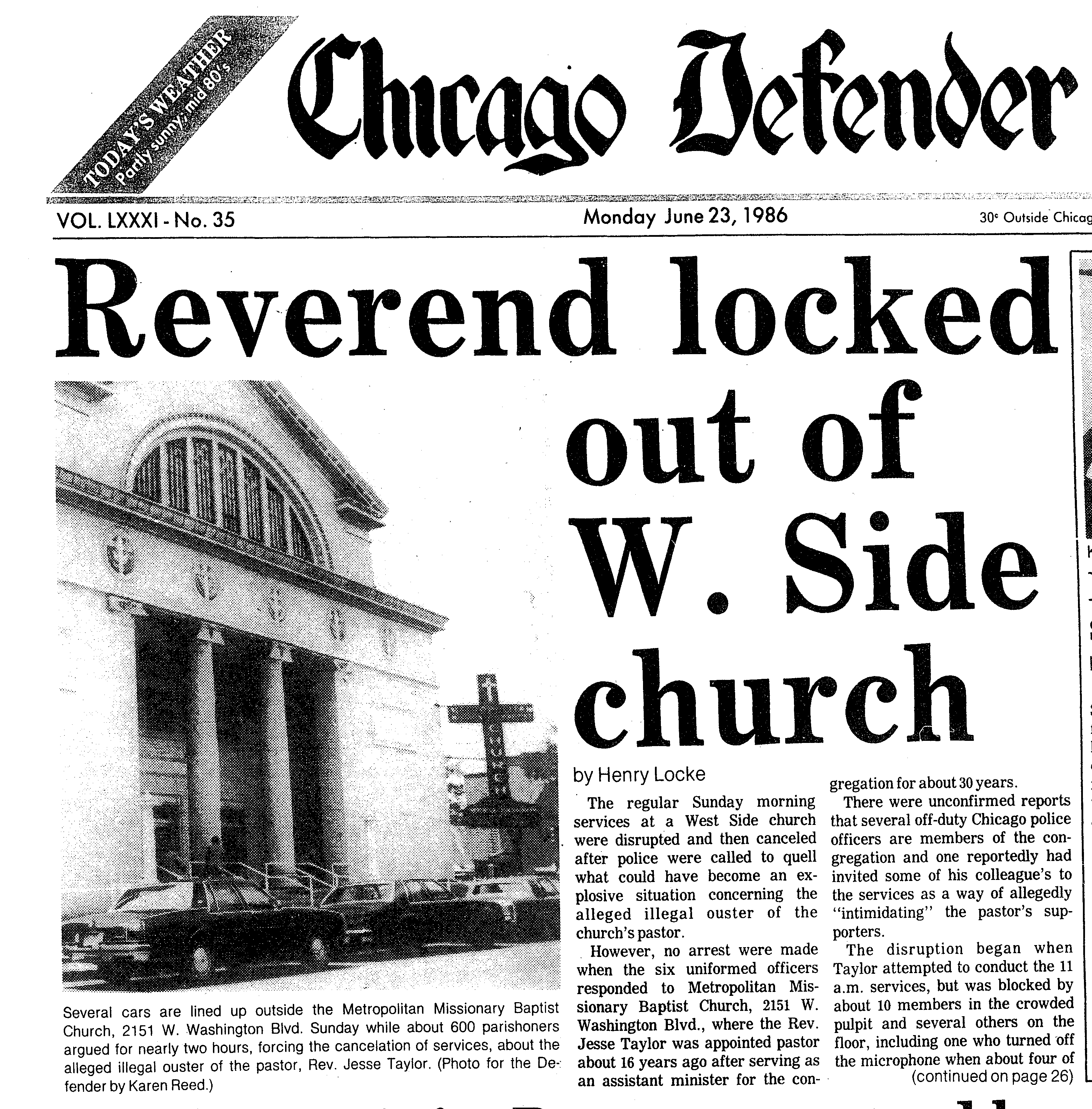
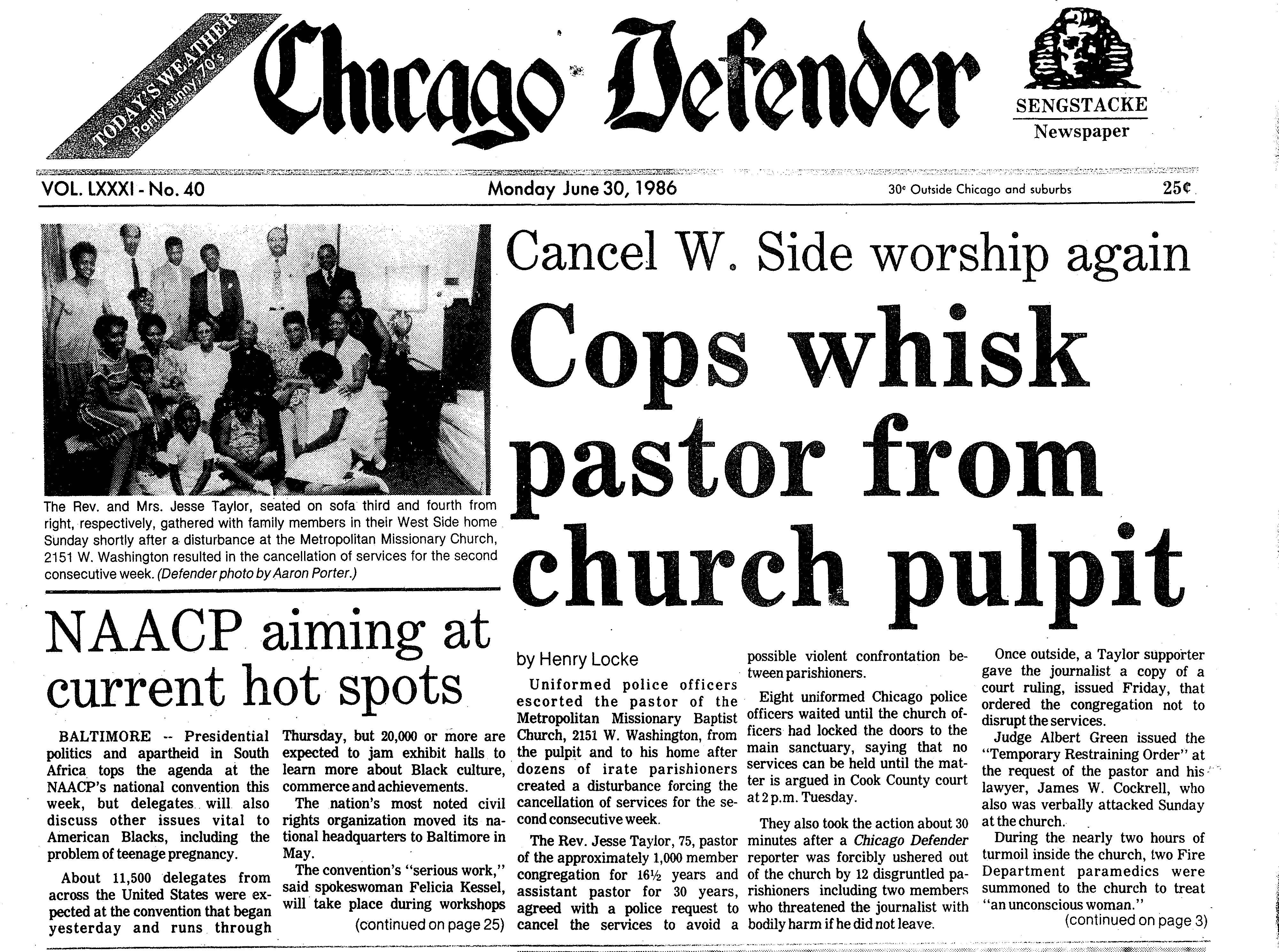
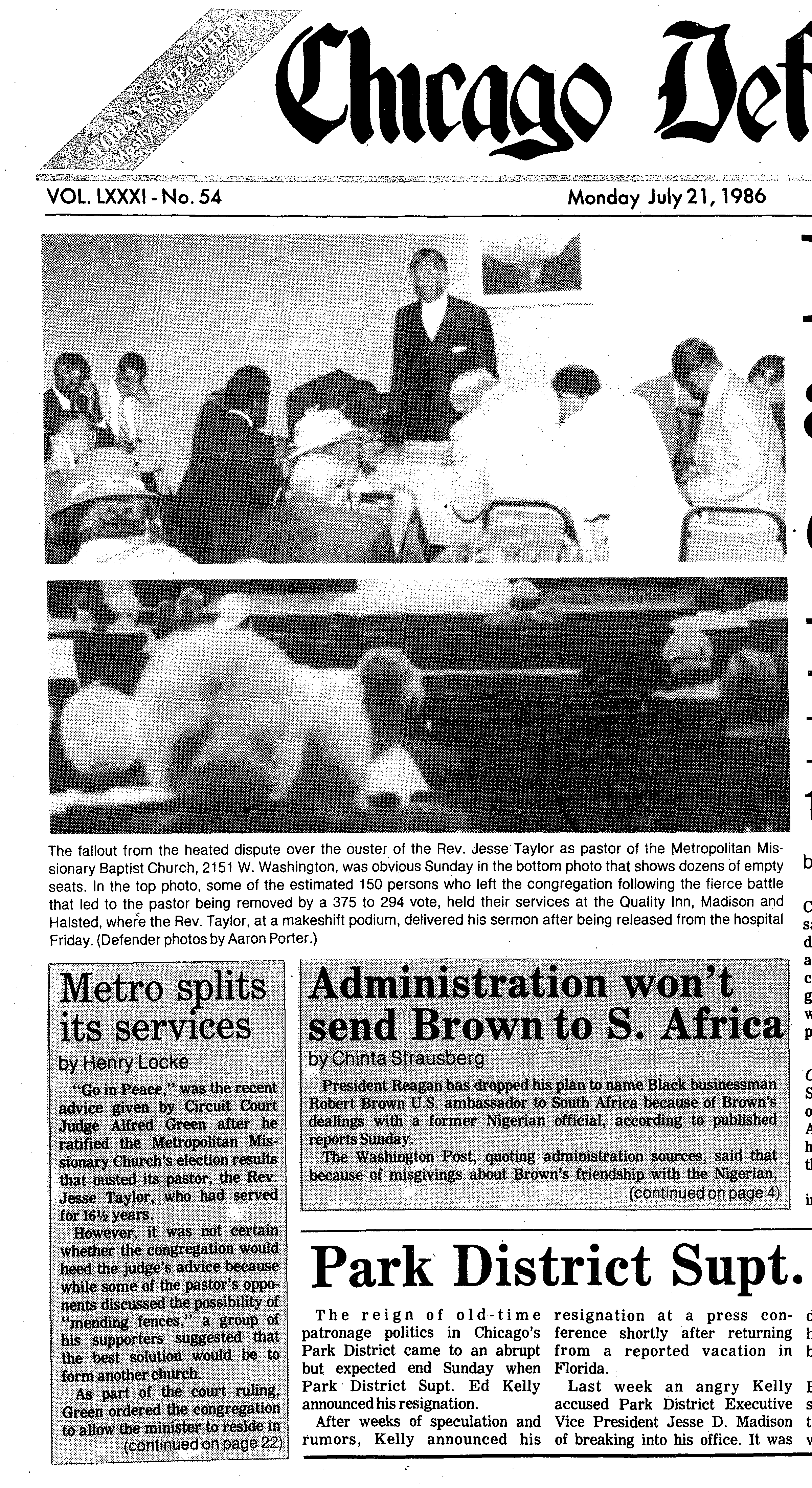
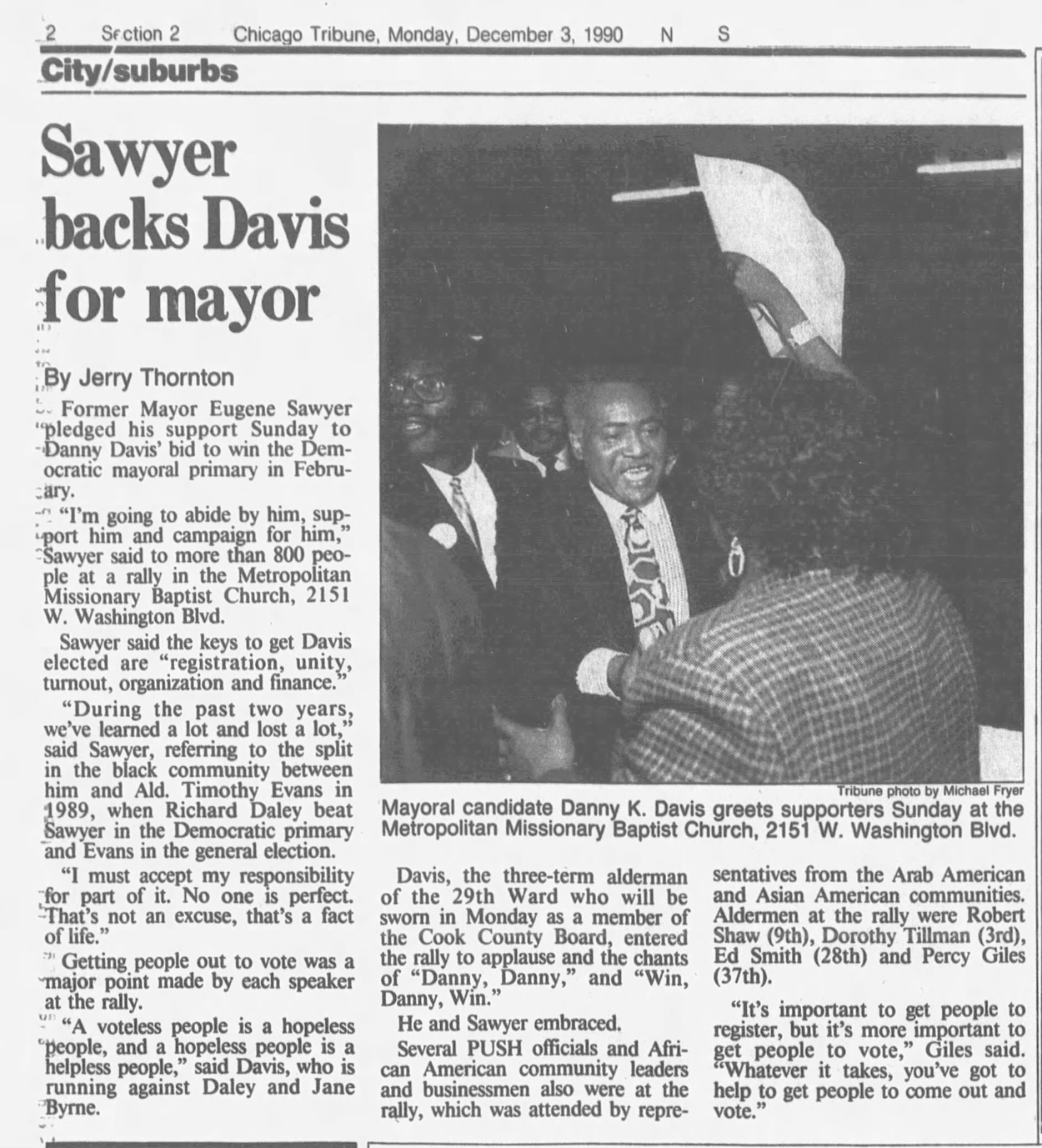
1970s photo, Illinois State Historic Preservation Office | three 1986 articles in the Chicago Defender about the conflict at Metropolitan | 1990 article about a Danny Davis and Eugene Sawyer campaign stop at the church
The church was also a regular stop on the political circuit. Future Congressman Danny K. Davis, Mayor Eugene Sawyer, and Barack Obama all made campaign stops here.
The building was designated a Chicago landmark in 1989. Added to the National Register of Historic Places in 2016, the church undertook a major renovation and repair project the next year. Huge credit to the congregation–their building looks great.
Production Files
Further reading:
- This feature from the Gordon Parks Foundation on the photographer's visit in 1953 is a must-read
- City of Chicago Landmark Designation Report, 1988
- National Register of Historic Places Registration Form, 2016
- Metropolitan Missionary Baptist Church in their own words
- Beyond Chicago's Black Metropolis: A History of the West Side's First Century, 1837-1940 by Christopher Robert Reed in the Journal of the Illinois State Historical Society
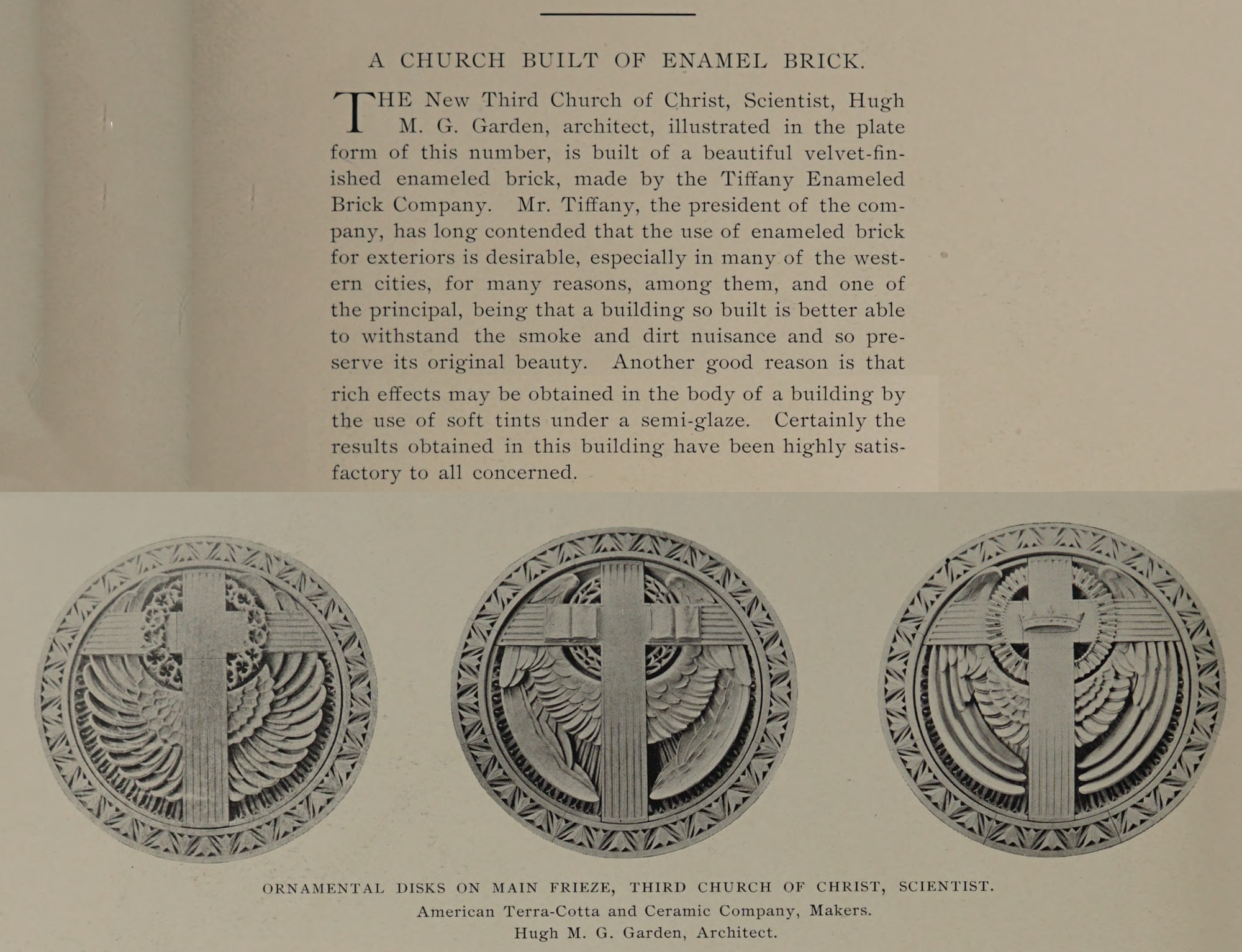
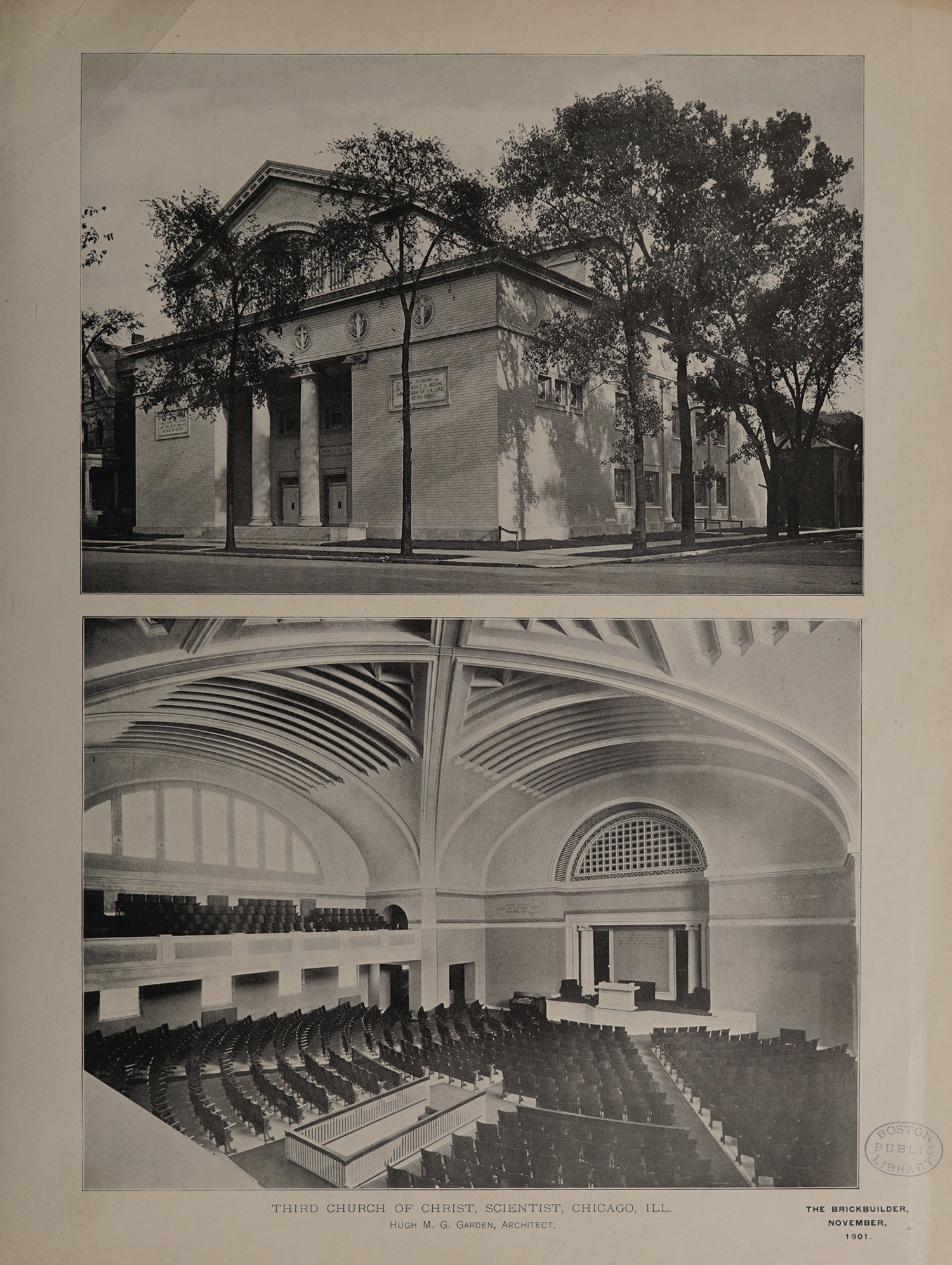
In The Brickbuilder, 1901, the Internet Archive
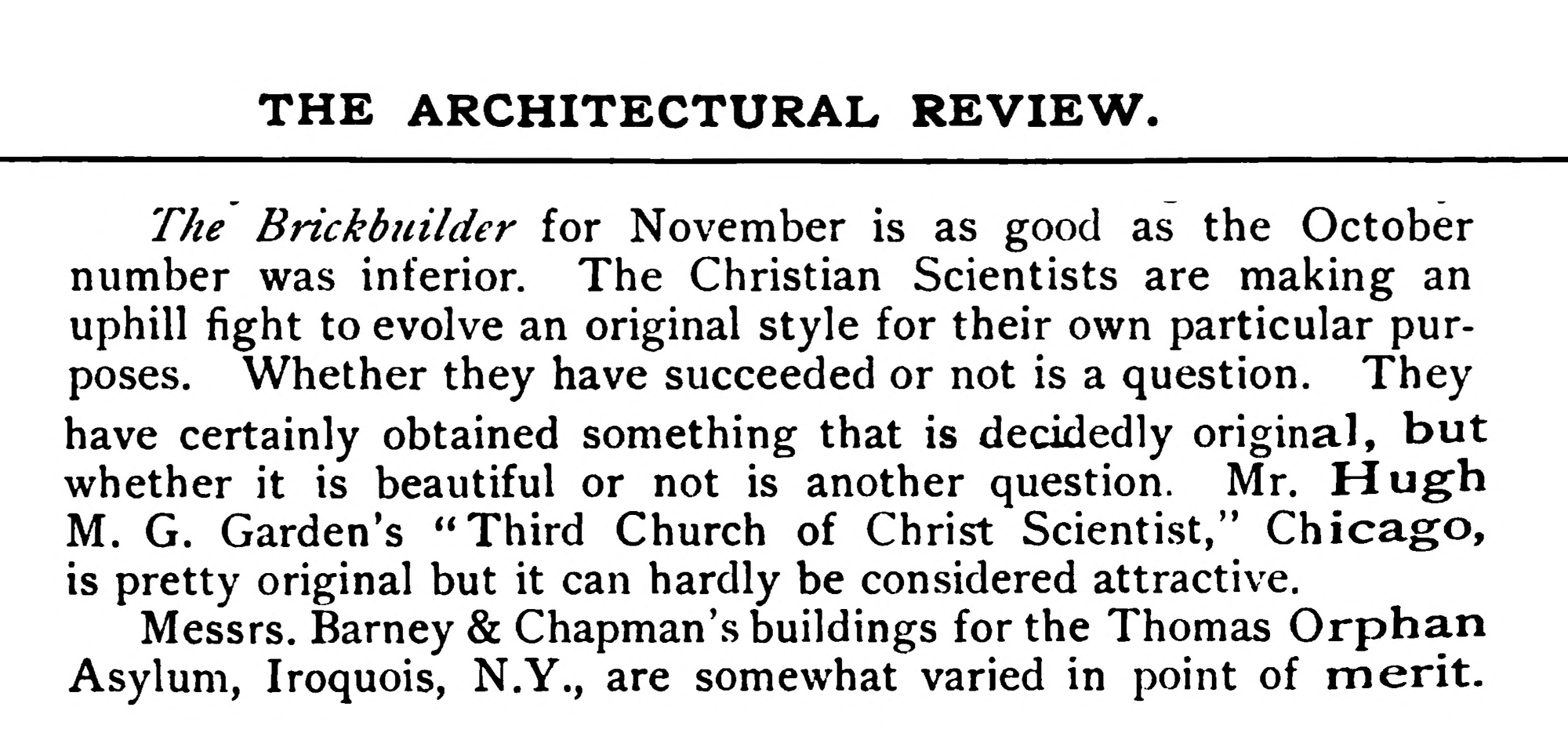
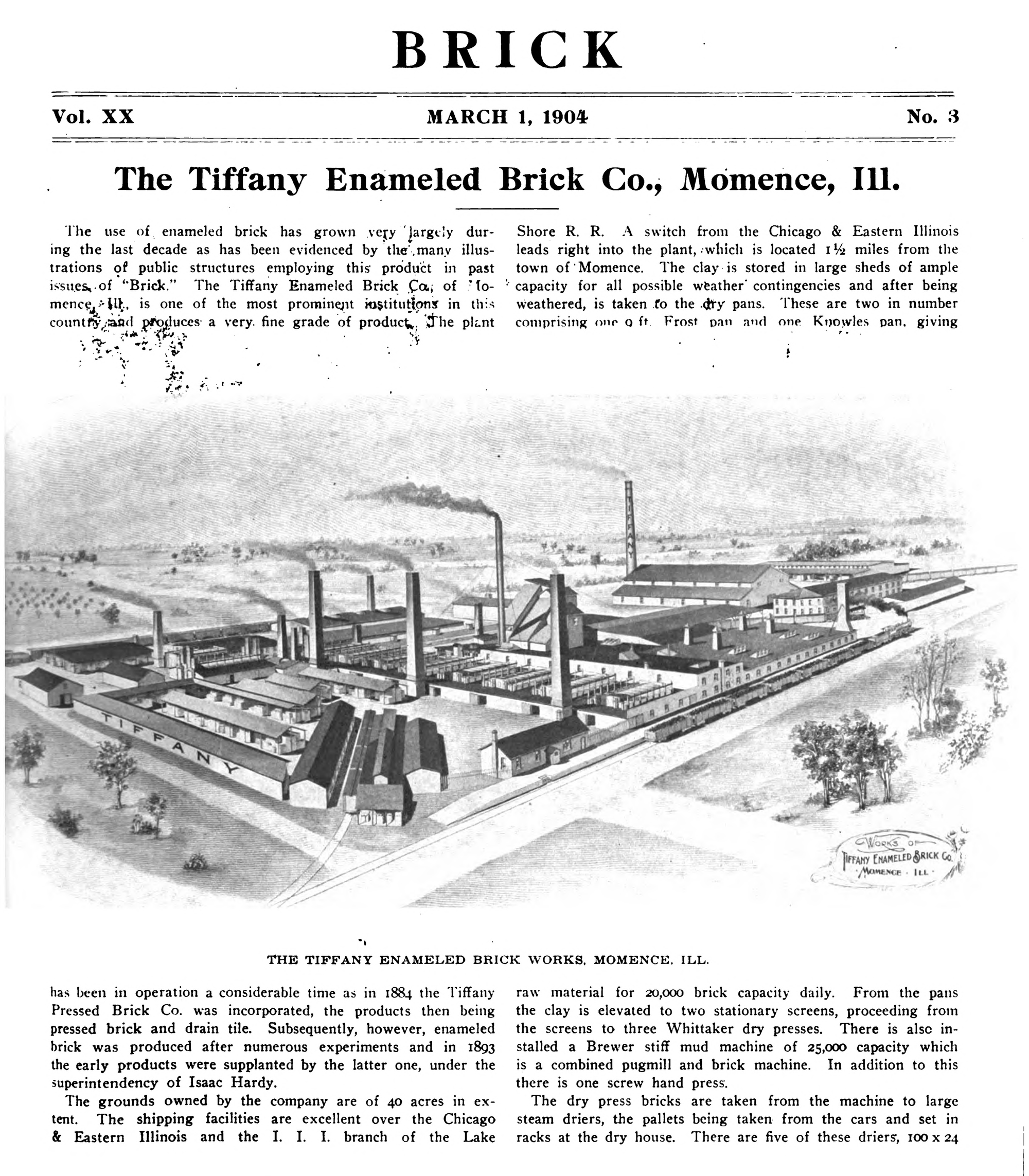
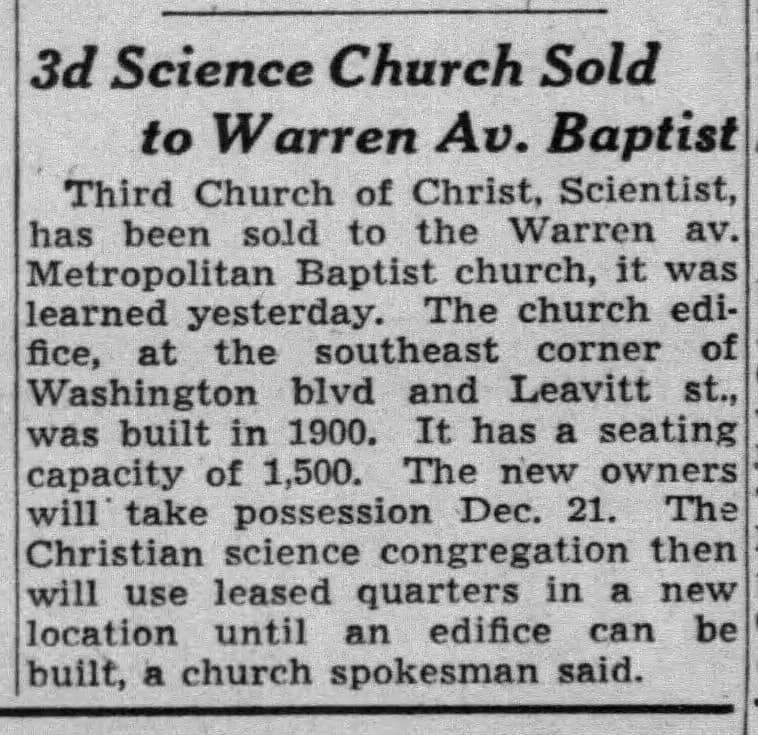
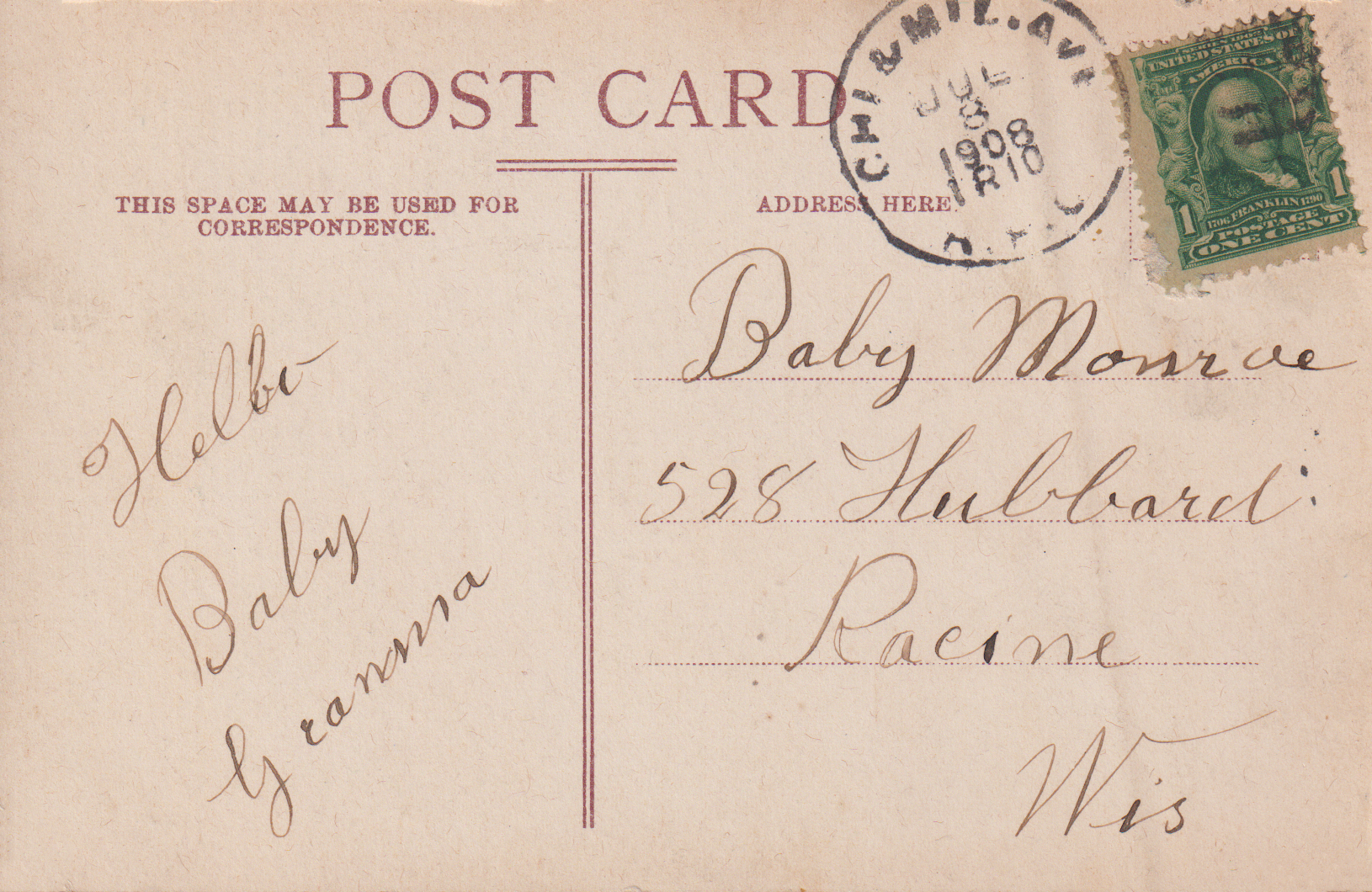

Postcard verso postmarked July 8th, 1908. Look at that—the home it was sent to in Racine is still there.

Member discussion: